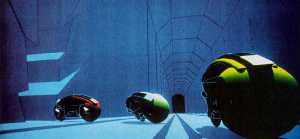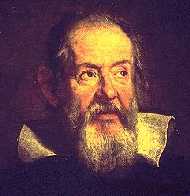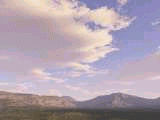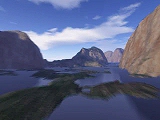|
[ Home ]
There are web sites that are already much
skilled on the arguments dealed in Metaverse. Here it follows a list of the best
web sites that we advise, to everyone interested to the argument, to visit as
soon as they can.
- Ken
Perlin's homepage :
(LD) Who said that a director of department
of the University is a boring man lacking contacts with the own students and
locked up in its own room protecting his chair (I'm seeing many hands
raises, comprised mine...). Then, you have reason, except in this case. I
would pay, and (who knows?) maybe sooner or later I will do it, in order to
follow one of its course of "Advanced Topics in Multimedia". In
order only to make an idea to you, is the inventor of an algorithm for noise
generation, algorithm that currently we use for the generation of the
profiles of mountains and clouds. However, you cannot understand what I am
saying until that you will not visit its web site. It's like a wonders book
, try to believe.
An extract from his web site, just to understand of who we are speaking:
 |
From
its web site, try:
COMPILE THIS: main(k){float
i,j,r,x,y=-16;while(puts(""),y++<15)for(x =0;x++<84;putchar("
.:-;!/>)|&IH%*#"[k&15]))for(i=k=r=0;
j=r*r-i*i-2+x/25,i=2*r*i+y/10,j*j+i*i<11&&k++<111;r=j);}
|
- The Galileo Project :
We would not be here if it were not for the
ideas shared from the members of the Galileo Project. Fans of the mythical
video game pertaining to the prehistory of the personal computers, Elite -
Frontier, written from mythical David Braben and from not less than Ian
Bell, the Galileo Web Site propose himself to the entire world like the inheriting
of the spirit of Elite. And no one can say that they are not organized,
visit the site in order to believe us. Currently they do not share many
resources, but the software that previously published has been much precious
to us in order to begin the Metaverse project.
It seems, moreover, that the project is still open to the adhesion of new
adepts ... if you are interested, there is bread for the teeth of all of you.
A great thanks to one of their members, Iestyn, that
written much code that has become the base of our project, when our planets
still looks like an hycoesaeder...
Some word from their site in order to understand who is the people about we
are talking...
 |
"Galileo
Galilei was, in his time, a heretic. He dreamed up seemingly outlandish ideas that flew in
the face of convention and on the surface appeared preposterous. He was condemned by the
authorities of the time, but was eventually vindicated. " "In 1996, the Galileo Project was tentatively born at
the University of Cambridge, England. It's aim was
simple: write a game which combines the ingredients which made Elite so successful
with up-to-date technology and further innovation. Although it would be recognisable to
those who had played Elite, it would offer much much more, taking full advantage of
recent advances in both communications and personal computers - specifically, it would
offer an international multiplayer environment using the medium of the Internet. " |
- Virtual Terrain
Project : Source of
great inspiration, at least as far as the techniques of visualization and
design of an application for the exploration of a virtual landscape. You
will recognize some landscape in their web site (ahem...). Some word
extracted from their web site:
 |
 "The goal
of VTP is to foster the creation of tools for easily constructing any part of the real
world in interactive, 3D digital form.
This goal will require a synergetic convergence of the fields of CAD, GIS,
visual simulation, surveying and remote sensing. VTP gathers information and tracks
progress in areas such as procedural scene construction, feature extraction, and rendering
algorithms. VTP writes and supports a set of software tools (VTP Toolbox) and
an interactive runtime environment (VTP Enviro). The tools and their source
code are freely shared to help accelerate the adoption and development of the necessary
technologies." |
The Good-looking Textured Light-Sourced
Bouncy Fun Smart and Stretchy Page (phew!):
Who written in this web site knows its work (and anyone can't say that he
don't say it). It's a great source of routines for writing graphical stuffs
of every kind. I cannot deny that you will find here something from this
site, but for a 3D graphical programmer, a tribute visit is an obligation.
Some words from their site in order to understand the treated arguments:
 |
"This Web Site is a collection of original and unique
articles written by me. The articles cover a range of computer programming related topics,
from graphics to physical modeling.
I have concentrated my efforts on writing about
those things not covered in most other similar sites. So you will find less about maths,
and more about writing impressive programs which look good, not just to other computer
programmers, but to philistines and technophobes too." |
Generating Random Fractal Terrain
: A very interesting
page written by Paul Martz. This page
talks a lot about the automatic generation of interesting worlds. These
pages includes a complete illustration on the methods for the realization of
a not-flat surface. It is recommendable a visit at least . It comprises the
bibliographical references and link to a class realized for the Microsoft
System Journal. Some words and images drawn from its page, hosted from
nothing less than www.gameprogrammer.com
 |
"Ten years ago, I stumbled across
the 1986 SIGGRAPH Proceedings and was awestruck by one paper in particular, entitled The
Definition and Rendering of Terrain Maps by Gavin S. P. Miller 1 . It described
a handful of algorithms for generating fractal terrain, and the authors also introduce a
new method which they considered to be an improvement. Initially I was impressed that these algorithms (even the algorithms
considered "flawed" by the authors) could create such incredible landscape
images! Then, upon reading the paper, I was floored by the simplicity of these algorithms.
I've been a fractal terrain addict ever since." |
This page has been updated on 01/05/02. |
 Best Links
Best Links